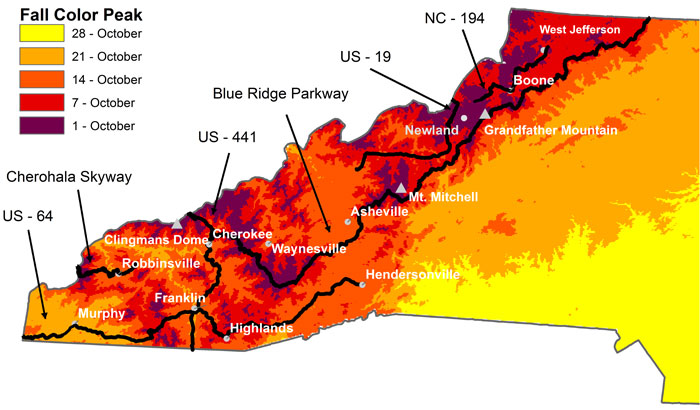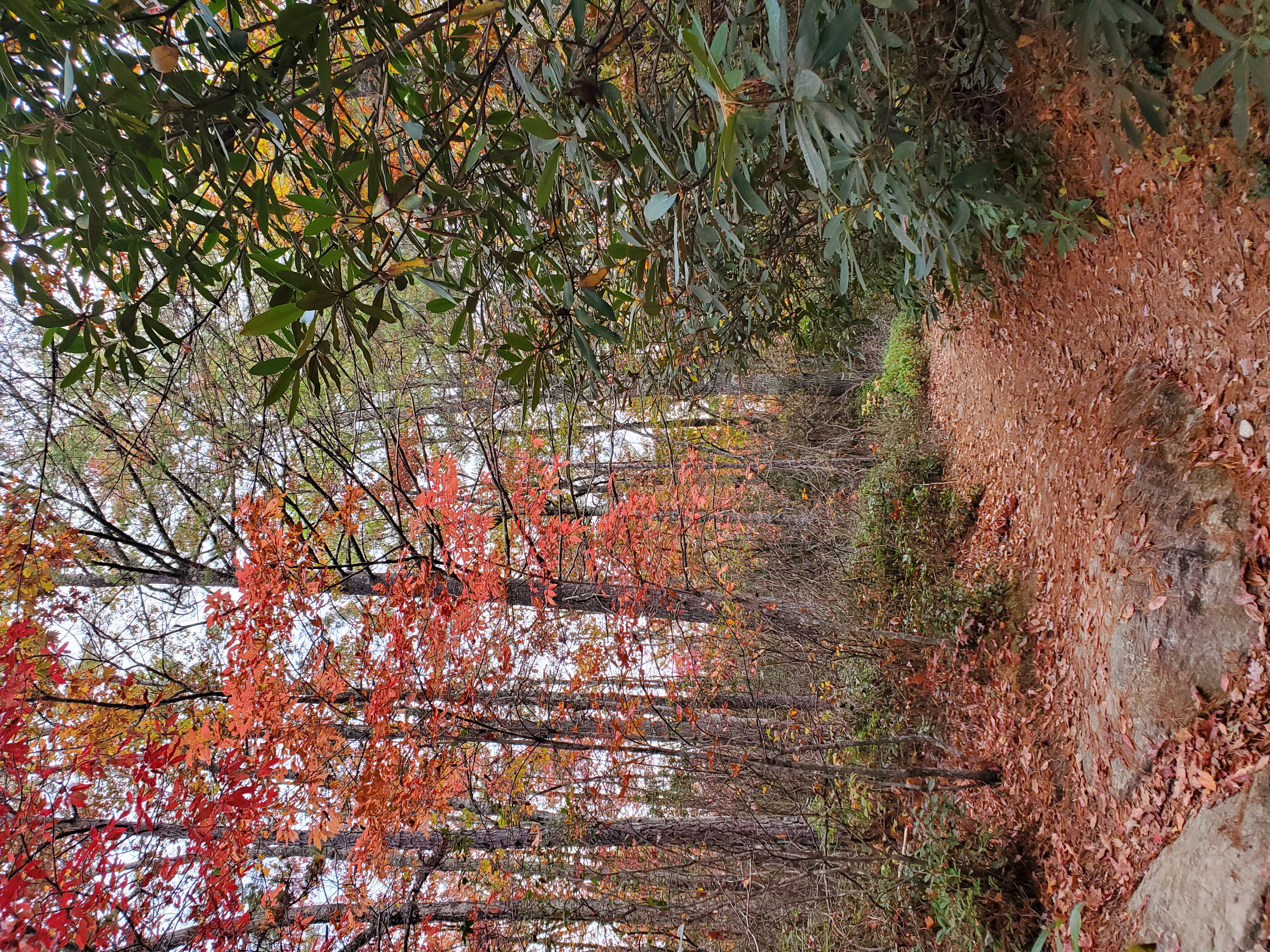 One of my favorite things about living in Western NC is that I can play outside year round. Winter is filled with open views through trees that have lost their leaves and woods quieted by snowfall. Spring brings ephemeral wildflowers, that give you new treasures to find every week. We can escape the summer heat by heading to higher elevations and playing in the many creeks, rivers, and waterfalls across our region. But fall is my favorite - warm sunny days, cool crisp nights, and ever-changing colors of the leaves on the trees. Temperatures are cool enough to bring out my favorite puffy jacket and warm socks for backpacking trips, and to really appreciate sitting around a campfire in the evenings.
One of my favorite things about living in Western NC is that I can play outside year round. Winter is filled with open views through trees that have lost their leaves and woods quieted by snowfall. Spring brings ephemeral wildflowers, that give you new treasures to find every week. We can escape the summer heat by heading to higher elevations and playing in the many creeks, rivers, and waterfalls across our region. But fall is my favorite - warm sunny days, cool crisp nights, and ever-changing colors of the leaves on the trees. Temperatures are cool enough to bring out my favorite puffy jacket and warm socks for backpacking trips, and to really appreciate sitting around a campfire in the evenings.
Because our area has such a wide range in elevations (1,200ft to 6,700ft within an hour drive of Asheville), we have an extended leaf season that starts in mid- to late-September and extends through mid-November. The diversity of our tree population - over 120 different species of tree - results in a rainbow of yellows, oranges, reds, purples, pinks, and browns throughout the fall. Higher elevations change color earlier, and the color moves down the mountains throughout the season. Some tree species turn earlier than others, so any given elevation may have an extended season as different tree species change.
Fall Color Forecast
Forecasting peak leaf dates is especially challenging because no one can accurately predict nature this far in advance. Color change depends on temperatures and rainfall throughout the year. It's also important to note that storms can have a significant impact on how fast leaves fall off trees. The following dates are a general guideline, but leaf color can be found outside these date ranges.

Leaf Color Map is from the Appalachian State University Biology Department, and is based on both latitude and elevation.
Late September
Peak color above 6,000ft, including Mt Mitchell and Black Balsam Knob. While it isn't over 6,000ft, Graveyard Fields tends to change early.
First Week of October
Peak color 5,000ft - 6,000ft, including Craggy Gardens, Max Patch, and many of the peaks in Great Smoky Mountains National Park.
Second Week of October
Peak color 4,000ft - 5,000ft, including Mt Pisgah, Pinnacle Park, and Bearwallow Mountain.
Third Week of October
Peak color 3,000ft - 4,000ft, including Looking Glass Rock and Linville Gorge. This is a great time to drive the Blue Ridge Parkway and see the leaves changing in the valleys below the many scenic overlooks.
Last Week of October
Peak color 2,000ft - 3,000ft, including Asheville, Biltmore House, and the North Carolina Arboretum.
First Week of November
Peak color 1,000ft - 2,000ft, including Lake Lure, Chimney Rock, and Dupont State Forest.
Second Week of November
Peak color at low elevation regions south of Asheville, including Gorges State Park and The Foothills Trail
Making the Most of Your Fall Hike
 Whether you're planning to hike alone or with one of our guides, there are a few things you should keep in mind before heading out for a fall hike.
Whether you're planning to hike alone or with one of our guides, there are a few things you should keep in mind before heading out for a fall hike.
- Dress in layers. Temperatures cool off earlier in higher elevations; you can expect a decrease of 3-5 degrees for every 1,000 feet in elevation gain. So temperatures at the highest elevations can be up to 20 degrees cooler than in Asheville. Wearing a short short sleeve shirt layered with a lightweight long sleeve and a vest/light fleece allows a wide range of comfortable temperatures. Tights with a fleece skirt is a great layering system for the bottom half of the body. Packing a warm beverage in an insulated bottle can be a good way to stay warm as well!
- Wear bright colors. Fall is hunting season on National Forest land, so bright colors can keep you visible and safe on trail.
- Hike early and/or on weekdays to avoid the crowds. Fall weekends are some of the busiest days both in town and on trail, as people travel to experience our beautiful fall leaves. Trailheads and roadways fill up early. We recommend and early morning or late afternoon hike if you must hike on the weekends. Weekdays are always less crowded. If you get to a trailhead and the parking is full, opt for a different hike instead of parking outside of allowed parking areas.
- Research your hike ahead of time. Most of our trails, trailheads, and mountain roads have spotty cell signal. Download your driving directions and maps ahead of time, and be sure to check for rules about overnight parking, campfire restrictions, group size limits, etc. If you're hiking with a dog, check that dogs are allowed on the trails you'd like to hike, and be sure to follow any leash requirements. This is a good rule of thumb year round!
- Be flexible with your hiking plans. If we have a storm that knocks leaves down early or leaves linger at higher elevations, you can adjust your plans to catch the best colors possible!
To book a trip with us this fall, visit our trip calendar, call our shop at 828-713-5451, or shoot us an email.







